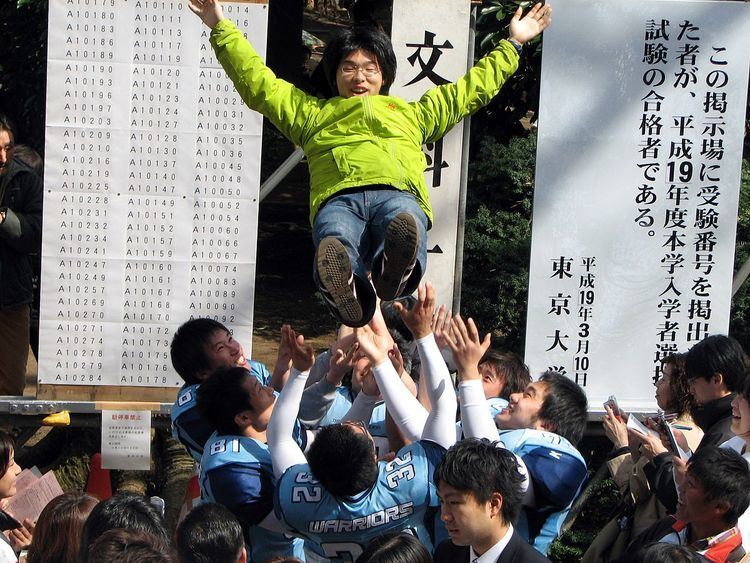 | ||
Yobikō (予備校) are privately run schools that are marketed to students taking examinations held each year in Japan from January to March to determine college admissions. These students generally have graduated from high school but have failed to enter the school of their choice. This test, unlike the French Baccalauréat or the South Korean College Scholastic Ability Test, has different versions with different schools looking for results from different exams. In Japan, this test is generally considered the most important event in a child's education. Students who fail may spend a year or more studying to retake the examination. They are sometimes referred to as rōnin, after masterless samurai. Yobiko are similar to juku except for differences such as curriculum, legal status, and the primary type of students who attend.
Contents
Legal status
Yobiko are for-profit private corporations that are officially listed as schools by Japan’s Ministry of Education, Culture, Sports, Science and Technology. At the municipal level they are supervised by boards of education. Even so, they are subject to little supervision as compliance with regulations for physical conditions is mainly checked, and curriculum and teacher salaries are not inspected.
Types
Yobiko mainly differ by the number of enrolled students. The most numerous yobiko are those for each city, and each has less than 500 students. National yobiko called mammoth yobiko have 10,000 students or more. There are also yobiko to prepare students to pass specialized entrance exams such as those for medical and art schools and have less than 100 students and typically charge higher tuition than other types of yobiko.
Curriculum
Designed to prepare students to pass college entrance exams, the curriculum consists of memorization of facts and learning of exam-taking skills. A study of a typical yobiko. found that the curriculum consisted of studying questions that were on previous exams, specific ways to improve answers, and specific subject topics that would be covered in the exam.
Teaching Personnel
The teaching personnel consist of a variety of teachers. Most consist of employed and casual part-time teachers such as retired teachers and teachers who are affiliated with another school. A smaller group consists of regular full-time teachers.
Student Body
The lines between the age groups of students that attend yobiko are becoming blurred. Junior high school students and high school seniors are known to attend after their regular school hours and on Sundays however, it is in agreement that most students are ronin, high school graduates who have failed the college entrance exam and are preparing to take it again. As ronin students, they attend yobiko classes full-time.
Monitoring
The quality of teaching is observed and evaluated by methods such as cameras in classrooms and a survey related to the quality of teachers’ performances that students take.
Mock Exams
Students take mock exams throughout the year. Scores are made public, so students are able to compare their scores with the scores of other students to find their academic standing. Based on their scores, students know whether they can meet the required entrance test scores required by the college they plan to apply to
Attendance and popularity
Family spending on private higher education is as common as that for public higher education. The OECD (n.d.) reported that in 2013, private spending accounted for about 66 percent of higher education costs and about 80 percent of that amount came from households (p. 2-3).
One of the most well-known yobiko is the Kawaii Juku. Although, it is considered a juku, among the courses it offers are classes specifically for entrance exam preparation, giving it a yobiko-like characteristic. They appeal not only to ronin students but also to a wide range of age groups as classes are offered to students beginning from elementary school to college (Kawaijuku Group, 2012).
Positive Impacts
Japan’s low juvenile crime rate may be caused in part because children who attend yobiko or juku in addition to regular school have less free time.
Yobiko could improve students’ chances of being accepting to a higher-quality college. Also, in general, ronin students who attend higher-quality colleges earn more income (Ono, 2007, p. 282).
Negative Impacts
Yobikos are not equally accessible to all students. A national survey and a survey on the Hiroshima branch of a yobiko, what can be considered a typical yobiko, found that more males attend yobiko than females. One reason is that becoming a female ronin is frowned upon in Japanese society. Also, not all students may be able to afford attending a yobiko. The strain on family income created by the expenses of sending children to yobiko or juku may be contributing to the declining birth rate in Japan.
